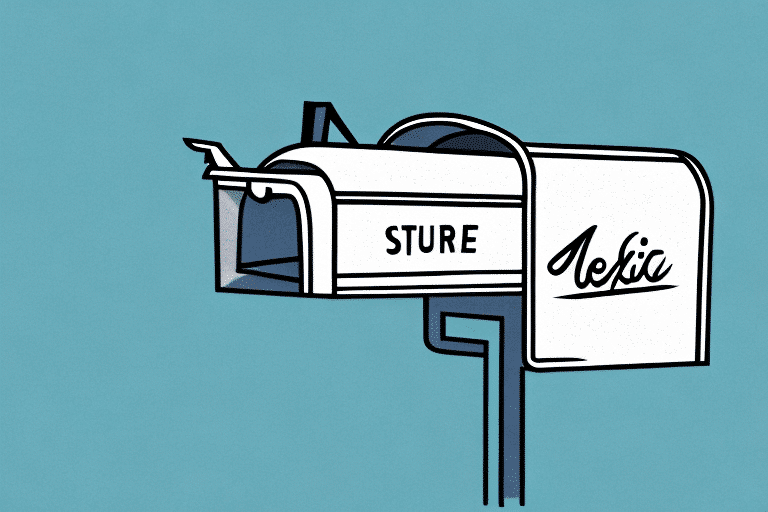Understanding the UPS Mailbox Surcharge
UPS, one of the leading global courier and shipping services, has recently introduced a new charge called the “Mailbox Surcharge” for certain services. This article provides a comprehensive overview of the UPS Mailbox Surcharge, including its purpose, how it works, its impact on businesses, and strategies to mitigate its effects.
Reasons Behind the Introduction of the UPS Mailbox Surcharge
The UPS Mailbox Surcharge was implemented in response to the increasing use of personal mailboxes and dropbox services by small businesses and individuals for shipping purposes. UPS identified a trend where non-traditional locations for package drop-offs and pick-ups were leading to reduced volume and revenue for their physical stores.
By introducing this surcharge, UPS aims to incentivize users to utilize UPS stores, ensuring packages are handled with care and arrive safely and promptly. Additionally, the surcharge helps cover the costs associated with maintaining and servicing various mailbox and dropbox locations, which require regular upkeep to remain functional and accessible.
Furthermore, the Mailbox Surcharge is part of UPS's broader initiative to streamline operations and enhance efficiency. Encouraging customers to use UPS stores allows the company to better manage resources and reduce the time and money spent on servicing non-traditional drop-off points.
Details of the UPS Mailbox Surcharge
The UPS Mailbox Surcharge applies to shipments collected from locations other than UPS stores, including UPS dropboxes, authorized UPS access points, and third-party retailers acting as UPS franchisees. The surcharge is an additional fee on top of regular shipping costs and varies based on the weight and size of the package, typically ranging from $0.25 to $4.00 per package.
It’s important to note that packages dropped off at UPS stores are exempt from this surcharge, as these locations are equipped to handle packages of all sizes and weights. To avoid the Mailbox Surcharge, customers are encouraged to drop off their packages directly at UPS stores.
Impact on Businesses and Individuals
The Mailbox Surcharge primarily affects small businesses and individuals who frequently use non-traditional drop-off locations. For businesses with high shipping volumes, the surcharge can significantly impact overall shipping costs.
Effect on Small Businesses
Small businesses relying on the convenience of UPS mailbox locations may face increased shipping expenses, which can affect their pricing strategies and profitability. These businesses might need to explore alternative shipping methods or negotiate rates with UPS to mitigate the additional costs.
According to a Business News Daily report, optimizing shipping strategies can lead to substantial cost savings, highlighting the importance of evaluating shipping practices in response to surcharges.
Strategies to Avoid the UPS Mailbox Surcharge
Customers can employ several strategies to avoid the UPS Mailbox Surcharge:
- Use UPS Stores: Dropping off packages at UPS store locations ensures that the surcharge is not applied.
- Leverage Online Shipping Tools: Utilize UPS’s online shipping tools to print labels and schedule pickups directly from your home or office.
- Negotiate Special Rates: Businesses with high shipping volumes can negotiate reduced or waived surcharges with UPS representatives.
- Choose Alternative Carriers: Compare shipping rates and services from different carriers to find more cost-effective options.
Alternatives to Using UPS Mailbox Services
To avoid the UPS Mailbox Surcharge, businesses and individuals can consider the following alternatives:
- Alternative Carriers: Services like FedEx, DHL, and the United States Postal Service (USPS) offer various shipping options that may better suit your needs.
- Third-Party Logistics Providers: Partnering with third-party logistics providers can help manage shipping requirements efficiently and potentially reduce costs.
- Online Shipping Platforms: Platforms like ShipStation and Shippo allow users to compare rates from multiple carriers, access discounted shipping rates, and streamline the shipping process.
Utilizing the United States Postal Service (USPS)
USPS offers a variety of shipping options, including Priority Mail and Priority Mail Express, which provide cost-effective and reliable alternatives for many businesses and individuals. These services often include tracking and insurance, ensuring packages are delivered safely.
Understanding Other Shipping Fees
The UPS Mailbox Surcharge is just one of several fees associated with shipping services. Other common fees include:
- Fuel Surcharges: Additional fees to account for fluctuating fuel prices.
- Late Pickup or Delivery Surcharges: Fees for delays in package pickup or delivery.
- Address Correction Fees: Charges for correcting inaccurate shipping addresses.
Businesses should thoroughly review shipping bills to ensure all fees and surcharges are transparent and accounted for in their shipping budgets.
The Future of Shipping and Surcharges
The introduction of the UPS Mailbox Surcharge may signal a broader trend in the shipping and package delivery industry toward implementing surcharges to cover additional operational costs. As e-commerce continues to grow, shipping providers may increasingly adopt such fees to manage the complexities of high-volume shipping.
Businesses should stay informed about industry trends and continuously evaluate their shipping strategies to adapt to changing fee structures and service offerings. Regularly reviewing and optimizing shipping practices can help businesses maintain cost-effectiveness and operational efficiency.
In conclusion, the UPS Mailbox Surcharge is a strategic charge introduced by UPS to encourage the use of UPS stores over non-traditional drop-off locations, thereby compensating for additional handling costs. It is essential for businesses and individuals to assess the cost-effectiveness of their shipping practices and explore alternatives to avoid unnecessary fees.






















